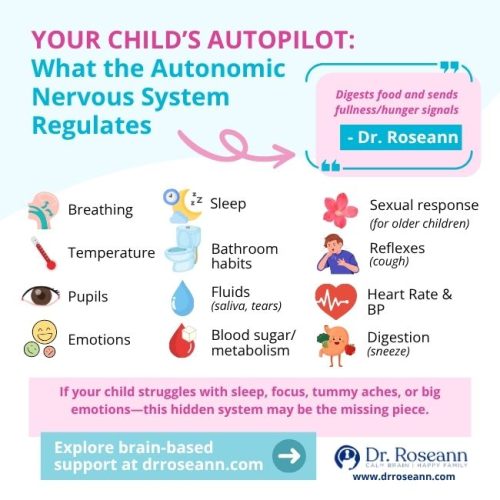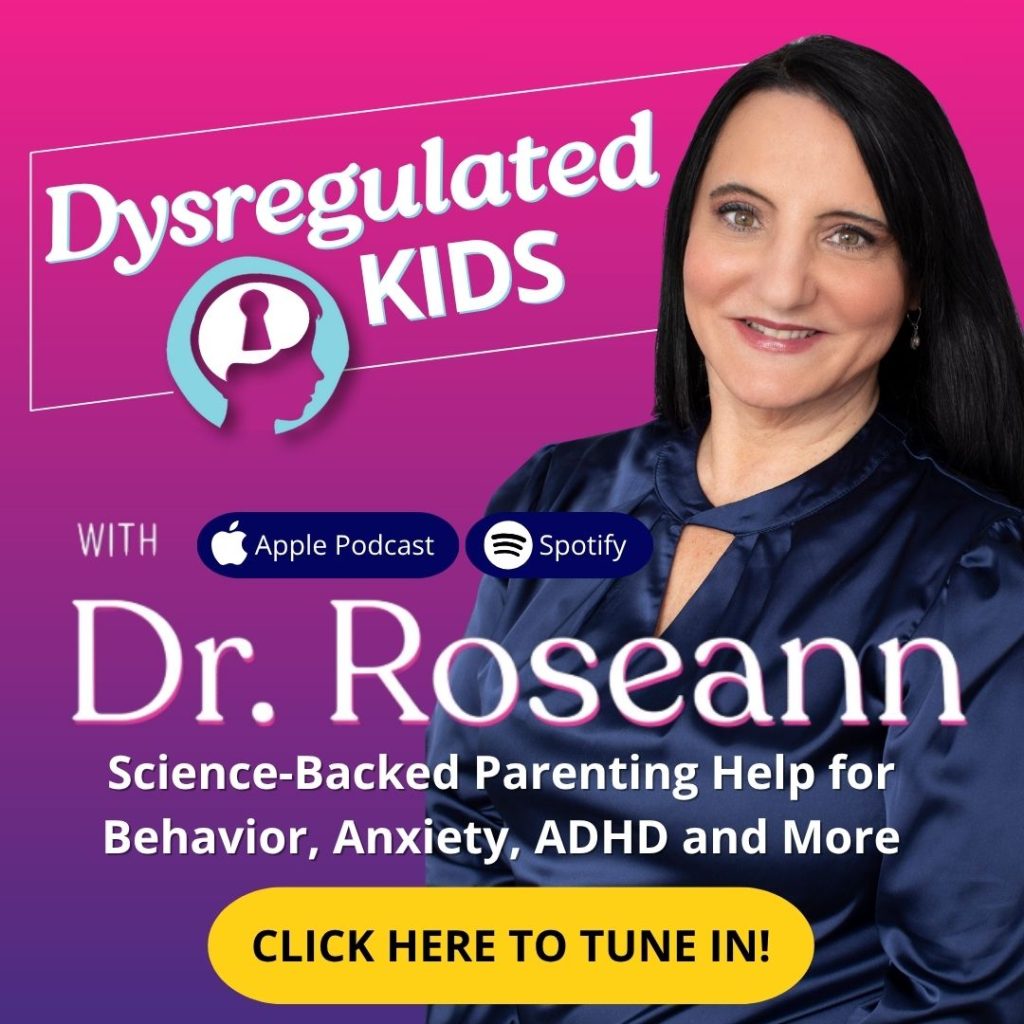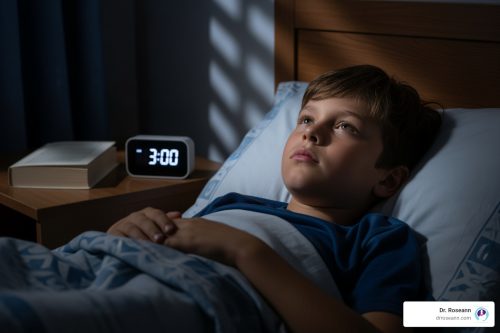Estimated reading time: 5 minutes
When your child flips from calm to chaos in a heartbeat, it’s not defiance—it’s a dysregulated nervous system calling out for help. At the center of it all? A powerful system most parents have never even heard of: the autonomic nervous system.
Before trying another behavior chart, ask yourself this—what is this system really doing, and how can I help my child feel safe again?
What Is the Autonomic Nervous System (ANS)?
The autonomic nervous system is like your child’s internal autopilot, constantly running behind the scenes to keep essential body functions going.
It’s responsible for keeping them alive, stable, and balanced, whether they’re resting, learning, or having a meltdown. In science terms, it’s constantly working to maintain homeostasis—the body’s natural balance that helps everything run smoothly.
The ANS has three branches:
- Sympathetic Nervous System (SNS) – the “gas pedal” that revs up the body during stress
- Parasympathetic Nervous System (PNS) – the “brake” that calms the body back down
- Enteric Nervous System (ENS) – the “gut brain” that controls digestion
These systems work like a seesaw, ideally staying balanced. But in dysregulated kids, that balance gets lost, and their body stays stuck in survival mode.
And here’s something really important—Polyvagal Theory shows that the vagus nerve isn’t just about calming the body; it also helps your child feel emotionally safe and able to connect with others. When that safety signal is missing, even small things can feel overwhelming.
The ANS has two (2) core functions:
- To activate the body in times of stress or danger (Gibbons, 2019)
- To calm things back down once the threat has passed
These functions are controlled by the 1st two branches, constantly shifting to help your child stay regulated and balanced:
1. Sympathetic Nervous System (SNS) – The “Gas Pedal”
This is your child’s survival system—it revs up when they feel unsafe, overwhelmed, or under pressure.
- Triggers the fight, flight, or freeze response by releasing chemicals like acetylcholine and norepinephrine
- Speeds up breathing and heart rate
- Pumps out stress chemicals like cortisol
- Puts digestion, immunity, and clear thinking on hold
This system is built for short-term protection—but in dysregulated kids, it gets stuck in overdrive. The alarm never shuts off.
2. Parasympathetic Nervous System (PNS) – The “Brake”
This is your child’s calm-down system.
- Slows the heart and breath
- Promotes digestion, healing, and emotional regulation
- Helps the body feel grounded, safe, and connected
Acetylcholine also plays a role here—signaling the body that it’s okay to rest. When this system works well, your child can reset after stress. But when it doesn’t? They stay stuck in high alert mode.
In dysregulated kids, the gas pedal stays pressed while the brake barely works. Their body is always “on,” even when there’s no real threat.
What Does the Autonomic Nervous System Regulate?
Think of the autonomic nervous system like your child’s internal autopilot. It’s working nonstop behind the scenes—even when your child is asleep—keeping things running so they can grow, learn, and feel safe.
The autonomic nervous system manages automatic bodily functions such as heart rate, blood pressure, digestion, and respiration. It also oversees processes like temperature regulation, sweating, urination, bowel movements to name a few more.
When this system gets overwhelmed or stuck? Everything spirals – sleep, digestion. Emotions, focus. Even bathroom habits can get thrown off without any clear explanation.

Here’s what it regulates:
1. Breathing
Adjusts the depth and pace based on what’s going on around your child (and inside their body too). Stress can make their breath shallow or quick without them realizing it.
2. Heart Rate
Speeds up in moments of panic, then should slow again when they’re safe. In dysregulated kids though, it often stays fast way too long.
3. Digestion
When your child feels calm, digestion works like it should. Under stress? That whole system can slam the brakes—cue stomachaches, constipation, or no appetite at all.
4. Temperature Control
Manages things like sweating, chills, and blood flow. Ever notice your child gets clammy or flushed when upset? That’s not random.
5. Emotional Regulation
Tells their brain whether it’s time to connect or protect. If their nervous system feels unsafe, even a small stressor can trigger a massive emotional response.
6. Sleep-Wake Cycles
Helps set the rhythm of rest and energy. When this gets disrupted, bedtime becomes a battle and mornings feel impossible.
7. Bladder and Bowel Function
Controls the urge to “go” or hold it in, depending on safety cues from the brain. Yes—those sudden bathroom accidents or frequent trips? They might be connected to stress, not misbehavior.
8. Pupil Dilation & Vision
Adjusts pupil size to respond to light, focus, or threat.
9. Fluid Production
Manages saliva, tears, and mucus—often reduced during anxiety, which can affect digestion or even dry eye symptoms.
10. Metabolism & Blood Sugar
Influences how the body uses and stores energy. Chronic stress can throw off glucose regulation.
11. Sexual Arousal & Hormonal Cycles (In Older Kids)
Regulates arousal and reproductive function, which can be disrupted in long-term stress, trauma, or neurodevelopmental conditions.
12. Reflexes
Coordinates automatic reflexes like coughing, sneezing, and vomiting—part of the body’s protective responses.
If your child struggles with sleep, tummy issues, sensory overload, accidents, or big reactions—this hidden system may be the missing piece.
When we regulate the nervous system, we help kids feel calm, safe, and more in control—because like I always say “Calm the brain first. Everything follows.”
What Keeps the Autonomic Nervous System Dysregulated?
For sensitive or neurodivergent kids—whether it’s ADHD, autism, OCD, PANS/PANDAS, or something else—the autonomic nervous system often gets stuck.
Here are some common triggers:
- Chronic stress or early trauma (Won & Kim, 2016)
- Neuroinflammation or infections
- Toxin exposure (like mold or heavy metals)
- Sensory processing overload
- Poor gut health or inflammatory diet
- Sleep that never feels restorative
- Too much screen time and not enough downtime
When this system can’t reset, your child stays in survival mode. Calm feels out of reach, and regulation becomes nearly impossible.
Kids with chronic stress or neurodevelopmental challenges often have low vagal tone, which makes it harder for their bodies to shift out of survival mode—even when the stressor is long gone.
But here’s the good news—you can help your child shift from chaos to calm by addressing nervous system dysregulation at the root.
As both a mom and mental health expert who’s supported thousands of kids, I want you to remember this: Behavior is a symptom of brain dysregulation—not a choice. When we calm the brain first, everything follows.
You don’t have to wait. You don’t have to medicate as your only option.
You can support your child’s brain and body—starting today. Explore the BrainBehaviorReset™ Program—a step-by-step, natural approach to calming the nervous system and helping kids feel regulated, safe, and in control.
Parent Action Steps
FAQs
How do I know if my child’s nervous system is dysregulated?
Signs can include emotional outbursts, anxiety, sleep issues, sensory overload, frequent illness, or chronic stomach problems. If your child seems stuck in fight-or-flight mode or flips from calm to chaos quickly, their nervous system may need support.
Will my child grow out of this?
Not without support. Many kids don’t just “grow out” of nervous system dysregulation—it often gets worse with age if left unaddressed. The good news? With the right tools, the nervous system can heal, and behavior can change.
What’s the connection between my child’s behavior and their nervous system?
Behavior is often a reflection of nervous system dysregulation—not willful defiance. When your child’s autonomic nervous system is stuck in survival mode, calm behavior isn’t possible until their brain feels safe again.
Terminology
Vagal Tone – How well your child’s body can shift from stress to calm. Higher tone = better emotional recovery.
Vagus Nerve – A key nerve connecting the brain to the body. It helps with calm, digestion, and feeling safe.
Homeostasis – The body’s natural balance. When it’s off, everything from emotions to sleep can be affected.
Citations
Gibbons, C. H. (2019). Basics of autonomic nervous system function. Handbook of Clinical Neurology, 407–418. https://doi.org/10.1016/b978-0-444-64032-1.00027-8
Won, E., & Kim, Y. K. (2016). Stress, the Autonomic Nervous System, and the Immune-kynurenine Pathway in the Etiology of Depression. Current neuropharmacology, 14(7), 665–673. https://doi.org/10.2174/1570159×14666151208113006
Always remember… “Calm Brain, Happy Family™”
Disclaimer: This article is not intended to give health advice and it is recommended to consult with a physician before beginning any new wellness regime. *The effectiveness of diagnosis and treatment varies by patient and condition. Dr. Roseann Capanna-Hodge, LLC does not guarantee certain results.
Are you looking for SOLUTIONS for your struggling child or teen?
Dr. Roseann and her team are all about solutions, so you are in the right place!











